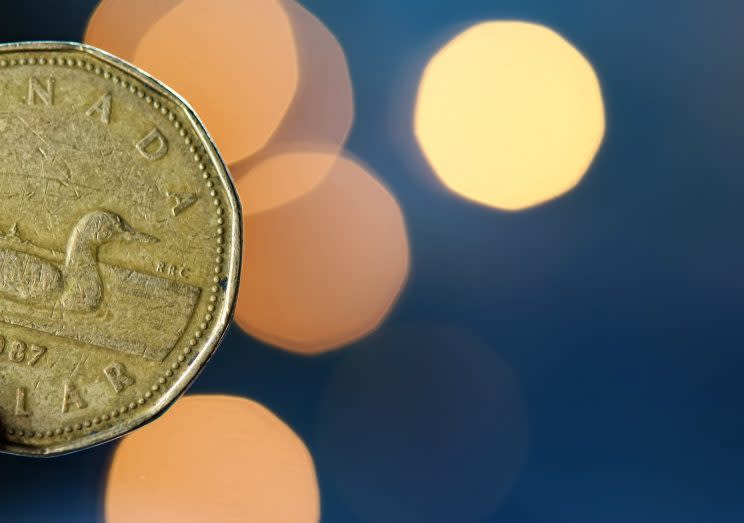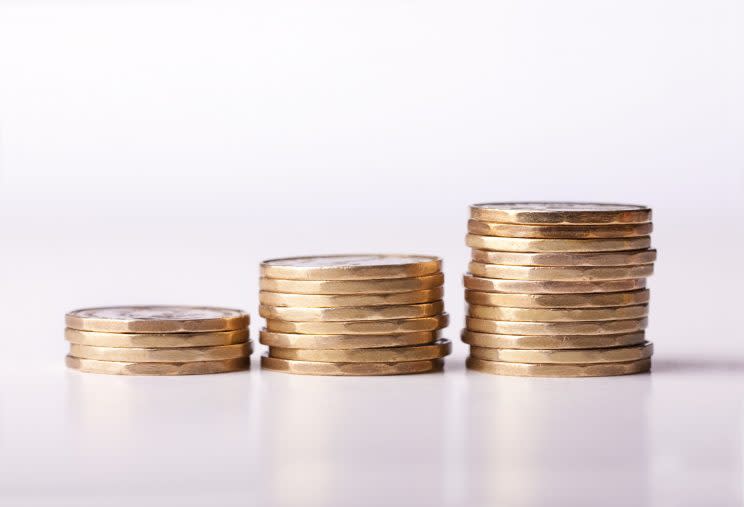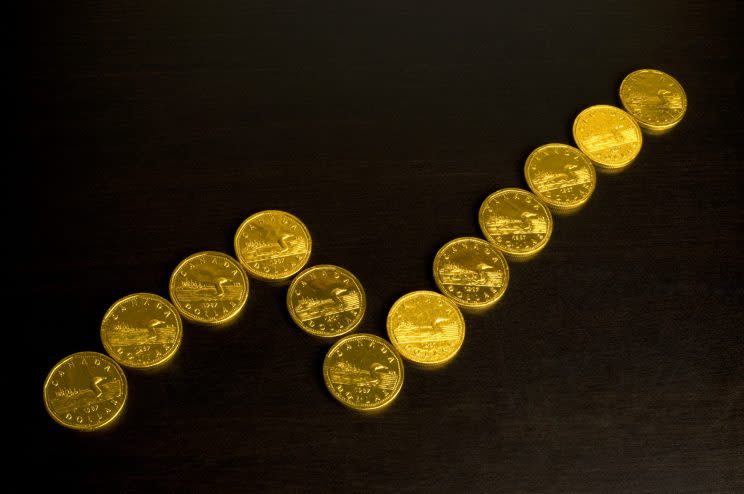Year in Review 2016: Aside from Trump, 2016 was the year of the loonie

We complain about high prices all the time, and wonder exactly who is ripping us off when the price of broccoli rises by a quarter. A lot of time, the answer is as simple as looking at the currency markets. The rise and fall in value of the Canadian dollar has a huge effect on costs, most obviously imported goods, but also commodities like oil and metals, which are priced in U.S. dollars, and so become more or less expensive depending on where the good ole loonie is sitting. It also impacts businesses, which means you may end up getting charged more because they’re selling to foreign markets at lower prices. Maybe the way to think about it is that when the loonie falls even a bit, pretty much everything you own just got less valuable.
So with that in mind, here’s a look at what has driven the Canadian dollar this year… so you can spread out your blame fairly.
THE BIG PICTURE

The Canadian dollar is nowhere near reclaiming the glory days of 2011-12, when it was actually more valuable than the U.S. greenback. If you attach national pride to that sort of thing, you can blame cheaper oil for much of the decline.
In fact, Canadian dollar’s been taking it on the chin pretty much steadily since 2012, falling each year versus the U.S. dollar.
And that’s the thing to remember, that any time we talk about the strength of the Canadian dollar, it’s always in comparison to the U.S. dollar, which is the global benchmark. So of course, we struggle again to talk about anything Canadian without dragging America into it as well.
However, it’s looks as if we may break the losing streak, as the loonie’s up about 2 cents, or just under 3 percent, in 2016.
“Overall, the Canadian dollar’s had a pretty good year,” says Shaun Osborne, chief foreign exchange strategist at Scotiabank.
A SLOW START TO THE YEAR

Since the news over the past three months has basically just been TrumpTrumpClintonTrump, it’s easy to forget that the loonie was a pretty big story earlier in the year, as it dropped to 12-year lows in late January.
A plunge in the price of oil through 2015 carried into this year, dragging our poor petro-currency with it. Just to jog your memory, the Canadian dollar has in recent years tended to trade closely with price of oil (with some exceptions), since all that black gold stuck in the sand in Alberta is only worth something when oil is expensive. Cheaper oil means no billions in the oil sands, and the loonie falls.
Thus, the continued drop of oil through January below $30 a barrel pulled the Canadian dollar down with it. Also weighing on the currency were concerns the Bank of Canada might cut interest rates late in the month. Cutting interest rates (while great for our mortgages) basically reduces the amount of yield on Canadian investments. So, with the comparable U.S. rate staying steady, a Canadian rate cut would hurt the loonie. The currency, which had been worth more than the U.S. dollar, as recently as 2013, bottomed at 68.6 U.S. cents on Jan. 18. This was also the point of peak fretting about how we’ll never be able to afford to travel internationally again.
Two days later, the Bank of Canada decided not to cut rates.
MAY PEAK

Market watchers understand that there’s often a sort of elastic band effect with investments; that if something falls or rises far enough, it’s due to snap back. With currencies, it’s a little more complicated, but it is true that when the market turns, it often turns hard, as it did after the Bank of Canada decision to hold rates steady, rather than to cut. It also coincided with a rebound in oil prices, giving the loonie two engines to push it higher.
But between January and May, the Canadian dollar handily outperformed oil, also boosted by stronger economic data and a sense that the U.S. might not be in such a hurry to raise interest rates after all.
All told, the currency gained more than a dime in less than four months, surging from 68.6 U.S. cents on Jan. 18 to a 2016 high of 79.81 cents on May 3.
THE TRUMP EFFECT

Remember that stuff about the Canadian dollar and oil moving in lock step? Well, that whole thing began to break down late this year, which by itself is significant. Of course, part of that might be due to the market’s white-knuckle approach ahead of the U.S. election.
And even though the Trump win has some saying the sky is falling for the U.S., that isn’t the case for the U.S. dollar. The greenback has in fact been stronger, helped by expectations that Trump spending plans will boost inflation and prompt interest rate increases.
“On the basis of what he said he would like to do during the campaign, which his essentially reduce taxes, increase spending on infrastructure and double the rate of growth in the us economy, that suggests that perhaps U.S. interest rates will be moving up a bit more quickly than the market had expected,” says Osborne.
At the same time, The Bank of Canada is showing few signs that it wants to raise rates. Hence a gradual weakening of the Canadian dollar over the second half of the year, from 77.31 U.S. cents at the end of June to about 74 U.C. cents near the end of the year.
So at the very least, it’s a winning year for the Canadian dollar, even if we’ll finish well off the peaks. This will be good for the snowbirds and anyone planning a vacation, but bad for exporters. In the end, there’s an argument to be made for both a strong and week loonie.
And the currency isn’t expected to push higher next year. Forecasters expect a stronger U.S. economy, U.S. interest rate increases and weak oil prices. That spells 70-ish cent territory for the Canadian dollar, or lower.
So plan the staycation, buy local, and sell as many widgets to foreign buyers as you can.

 Yahoo Finance
Yahoo Finance 
